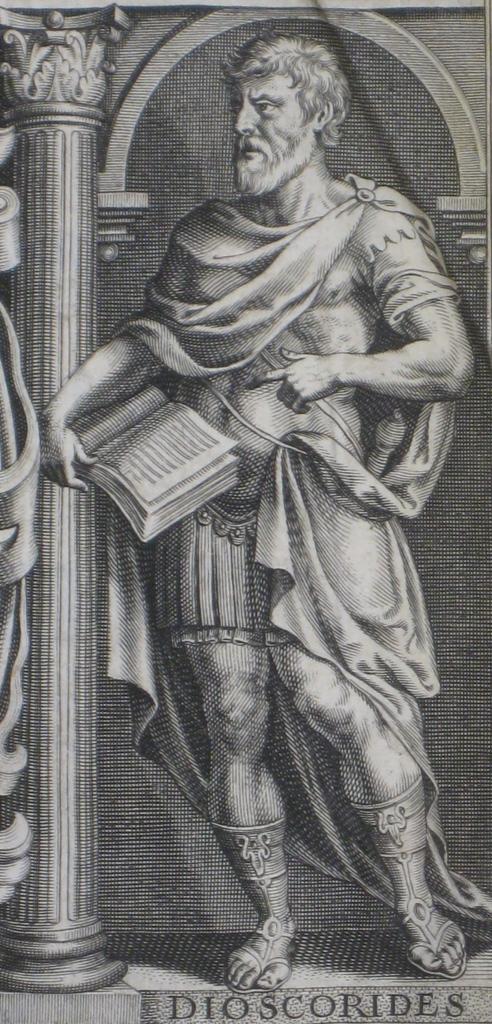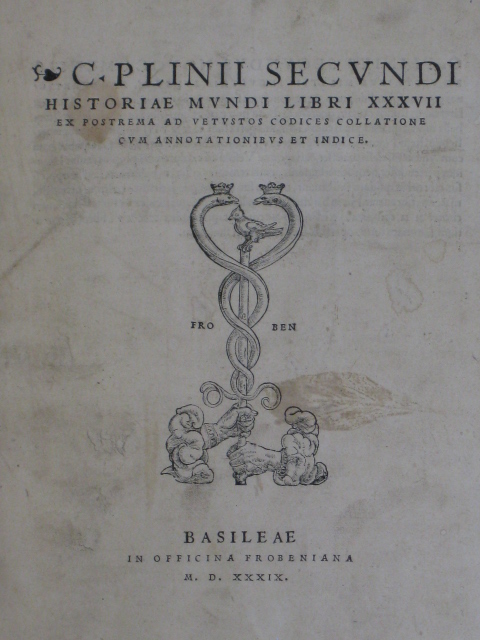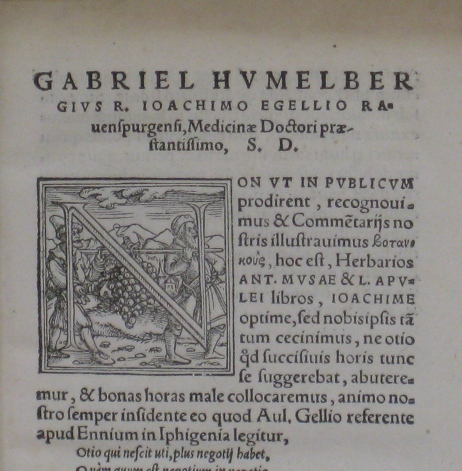Ancient Botany
Ancient Botany
In the late fifteenth and early sixteenth centuries, Renaissance commentators ‘rediscovered’ ancient botany. They produced editions of the works of some of the most famous ancient writers on botany: Theophrastus, Dioscorides, Pliny the Elder and Galen. Theophrastus, while acknowledged by Renaissance editors as the father of botany, was less attractive to them than later writers, particularly Dioscorides. Worth collected Theophrastus’ works in two editions: the text in Greek, which was incorporated into a collected works of Aristotle, published at Venice in 1497; and a Latin translation, Historia plantarum libri decem published at Amsterdam in 1644 and edited by Robert Constantin (d. 1605). The inclusion of not one but three editions of the works of Dioscorides in the Worth Library is a testament to the enduring appeal of the latter’s De Materia Medica. As Ogilvie remarks (2006), Dioscorides’ text was attractive to Renaissance editors because it was considered reliable because of the imprimatur it had received from Galen, practical because of its medical focus, and, finally, useful as an exemplar because it fitted in well with humanist methodologies. Sixteenth-century physicians viewed it as their most important text on medical botany. It was for this reason, as Reeds (2006) notes, that textbooks by Galen and Dioscorides dominated the botanical curricula of sixteenth-century medical schools.

John Gerard, The herball or Generall historie of plantes (London, 1633), details from title page.
Worth also collected texts by other ancient writers on botany. His Aldine edition of Aristotle’s works included Aristotle’s exploration of the subject. Later Roman writers, such as Emperor Augustus’ doctor, Antonius Musa (fl. 23BC) and Emperor Nero’s contemporary Pliny the Elder (23-79AD) were also represented. Pliny the Elder’s Historia naturalis had been well known to humanists of the early fifteenth century. Initially printed in 1469, the 1492-3 edition had caused a major debate within Renaissance scholarship on the veracity of the text. Worth was evidently not interested in the criticisms of Pliny launched by Ermolao Barbaro and Niccolò Leoniceno, preferring to collect a Froben edition of 1539.

Pliny the elder, C. Plinii Secundi historiae mundi libri XXXVII (Basle, 1539), title page detail.
Although De herba vetonica was attributed to Antonius Musa it seems likely that it was in fact written much later than the first century BC – recent commentators suggest it was the work of a fourth-century AD writer.

Antonius Musa, Ant. Musae de herba vetonica liber I. L. Apulei de medicaminibus herbarum liber I (Zurich, 1537), p. 1 detail.
Sources
Ogilvie, Brian W. (2006), The Science of Describing (University of Chicago Press).
Reeds, Karen Meier (2006), ‘Renaissance humanism and botany’ in Annals of Science vol 33 no. 6, pp. 519-542.
